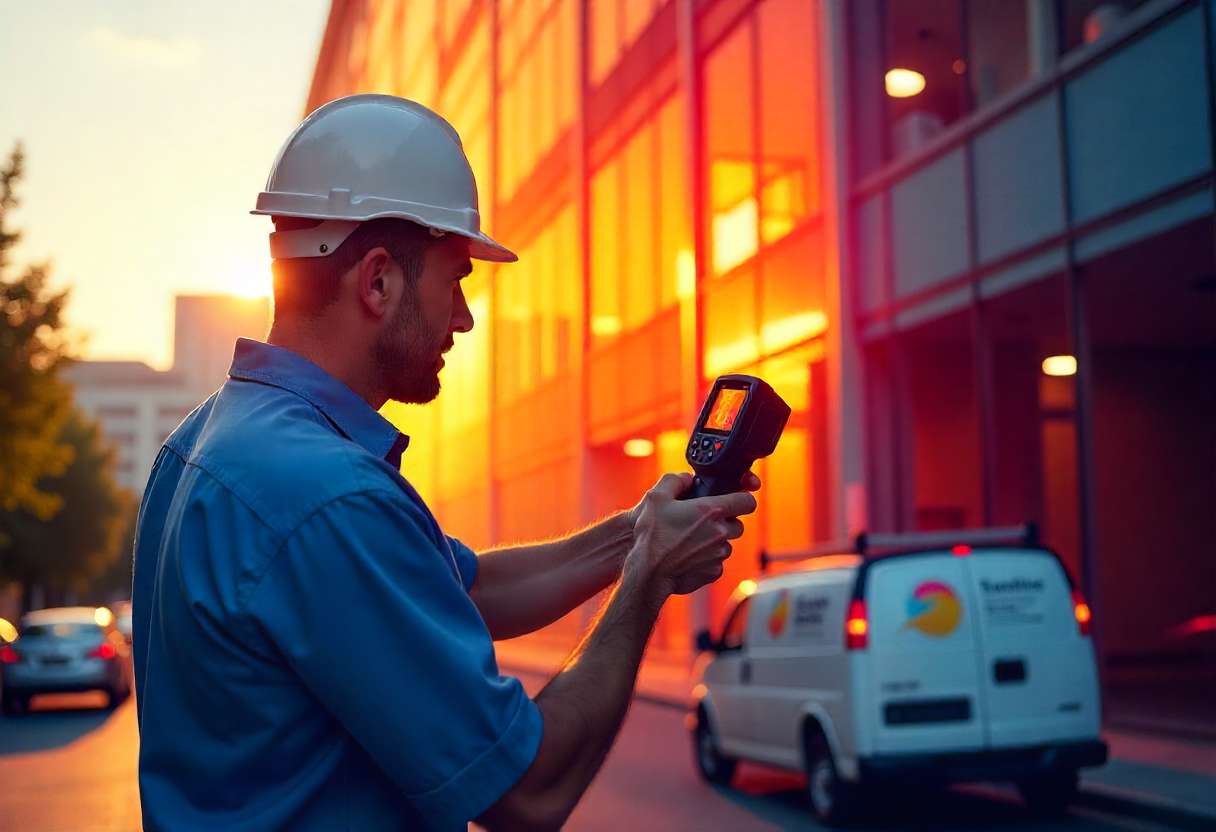How is a TM52 Assessment Conducted?
In this blog, we walk you through how a TM52 assessment is conducted, step-by-step so you're fully prepared, informed, and confident when working with the Gradwell Group.

TM52 Overheating Assessments are essential for ensuring non-domestic buildings remain comfortable, safe, and compliant, especially in a warming UK climate. If you're an architect, developer, or local authority planner, you may already know you need one. But what actually happens during a TM52 assessment? How is it carried out? And what should you expect from the process?
In this blog, we walk you through how a TM52 assessment is conducted, step-by-step so you're fully prepared, informed, and confident when working with the Gradwell Group.
What is the TM52 Assessment?
A TM52 assessment is a dynamic thermal modelling process developed by CIBSE to check if indoor environments in buildings like schools, offices, hospitals, or libraries are at risk of overheating during summer months.
It uses realistic climate data, internal heat gains, and architectural design inputs to simulate daily temperature performance across multiple rooms or zones.
What Buildings Need TM52?
You’ll need a TM52 assessment if your building:
- Has natural ventilation or limited mechanical cooling
- Falls under the London Plan, BB101 (education), or HTM 03-01 (healthcare)
- Is aiming for BREEAM credits or Part O compliance
- Is a new-build or retrofit commercial or institutional project
Step-by-Step: How We Conduct a TM52 Assessment?
1. Project briefing and information gathering
We start by reviewing your:
- Architectural drawings (plans, elevations, sections)
- Window sizes and glazing specs
- Insulation values (U-values) and ventilation strategies
- Internal layouts and zoning
- Occupancy levels and usage schedules
2. Building modelling using simulation software
We use advanced software (e.g. IES VE or DesignBuilder) to digitally recreate your building in 3D. Each room or thermal zone is modelled with:
- Solar gain
- Thermal mass
- Ventilation rates
- Internal heat sources (people, lights, equipment)
According to CIBSE, overheating can reduce productivity by up to 15% in offices.
3. Applying the TM52 Criteria
We test your design against three specific criteria:
- Criterion 1: Hours of Exceedance
Max 3% of occupied hours above the comfort temperature +1°C - Criterion 2: Daily Weighted Exceedance
Measures severity × duration. Max of 6 degree-hours per day. - Criterion 3: Upper Limit Temperature
The space must not exceed +4°C above comfort temp, ever.
Fail two or more, and the building doesn’t comply.
4. Analysing results and refining design
If the building fails the assessment, we:
- Identify problem zones
- Suggest mitigation strategies, such as:
- External shading
- Improved natural ventilation
- Glazing upgrades
- Changing thermal mass or materials
- External shading
- Rerun simulations to test improvements
5. Reporting & planner-ready documentation
You’ll receive a planner-friendly report that includes:
- A summary of the model inputs and outputs
- Compliance results for each zone
- Graphs and visuals showing temperature trends
- Suggested design changes (if needed)
All reports are tailored for planning approval, BREEAM, or Part O submissions.
Learn more about our TM52 Overheating Assessment Service
Why Choose Gradwell Group for TM52?
We’re not just modellers we’re partners in your project’s success. Here’s why our clients trust us:
- Fast turnaround Reports in 5–10 working days
- Clear advice No jargon, just actionable feedback
- Value-driven Fixed quotes. No surprises.
- Planning-ready reports Trusted by councils and BREEAM assessors
- Support for TM59, Part L, SAP, SBEM & more
FAQs
1: How long does a TM52 assessment take?
Most projects are completed within 5–10 working days.
2: Do I need TM52 if I have air conditioning?
Not usually. TM52 is mainly for naturally ventilated buildings.
3: Can I fail TM52 and still get planning permission?
Not without making changes. We’ll help you pass affordably.
4: Is TM52 used for homes too?
No. Residential buildings usually follow TM59.
Ready to Start Your TM52 Assessment?
A TM52 Assessment isn’t just a box-ticking exercise it’s an essential part of climate-responsive design. By identifying overheating risks early, you can avoid costly fixes, keep your occupants comfortable, and gain planning approval faster.
At Gradwell Group, we make TM52 assessments:
- Easy to understand
- Fast to deliver
- Cost-effective to implement
Ready to future-proof your building design?
Contact us today or visit our TM52 services page to get started.
.svg)









